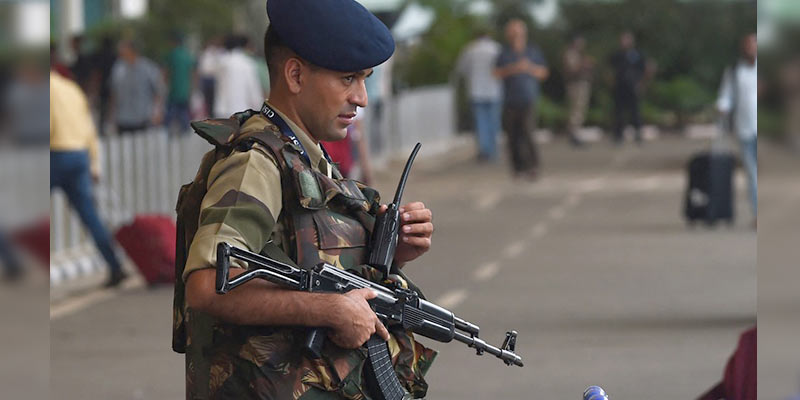- India
- Dec 23
CISF to provide security to Parliament complex
• The government has decided to hand over comprehensive security of the Parliament building complex to the Central Industrial Security Force (CISF) in the wake of the recent breach of the safety ring.
• Earlier, frisking of visitors to Parliament complex was done by Delhi Police personnel.
• In a major security breach on the anniversary of the 2001 Parliament terror attack on December 13, two persons jumped into the Lok Sabha chamber from the public gallery during Zero Hour, released yellow smoke from canisters and shouted slogans before being overpowered by the MPs. One of the accused had hidden a canister in his shoes.
• The CISF will render access control to the new and old Parliament complex in an airport security-like fashion where body frisking of persons will be done through hand-held detectors and their belongings will be checked through X-ray machines, with a provision to even scan shoes, heavy jackets and belts by putting them on a tray and passing them through the scanner.
The Central Industrial Security Force (CISF)
The Central Industrial Security Force (CISF) was raised through an Act of Parliament in March 1969. It was established with a strength of 3,129 personnel. The strength of the Force has grown exponentially to about 1,73,355 personnel.
It is a part of Central Armed Police Forces (CAPFs) under the ministry of home affairs.
Functions of CISF:
• The CISF is providing security cover to 358 establishments including 65 domestic and international airports and fire protection cover to 104 industrial undertakings.
• It has become a premier multi-skilled security agency of the country, mandated to provide security to major critical infrastructure installations of the country in diverse regions including terrorist and naxal affected areas.
• CISF is currently providing security cover to atomic power plants, space installations, defence production units, mines, oil fields and refineries, major sea ports, heavy engineering/steel plants, fertilizer units, airports, hydro electric/thermal power plants, sensitive government buildings and heritage monuments (including Taj Mahal and Red Fort) and important private sector units.
• CISF is one of the largest Fire Protection Service providers in the country. It provides fire protection and fire safety coverage to 112 establishments. Fire wing is an integral part of CISF, managed by professionally trained personnel with science and engineering backgrounds. First fire wing unit was inducted at Fertilizer and Chemical Travancore (FACT), Kochi in 1970 with a sanctioned strength of 53 personnel. CISF is the only Central Armed Police Force having a full-fledged fire service wing.
• In 1999, CISF was authorised to extend technical and fire consultancy services on the payment basis to establishments even in the private sector where CISF is not deployed.
• The specialised task of airport security was assigned to CISF in 2000 following the hijack of Indian Airlines Flight IC-814 to Kandahar. The Force has since been deployed at 64 airports across the country.
• The CISF was inducted in Delhi Metro Rail Corporation (DMRC) in 2007. DMRC is a Hyper Sensitive Unit and is the largest unit of CISF.
• CISF has been mandated to provide protection to the VIP protectees of various categories across the country. The VIP Security Wing of CISF, called Special Security Group (SSG), is looking after the security of VVIPs/VIPs.
Central Armed Police Forces
Central Armed Police Forces (CAPF) refers to the common nomenclature of seven security forces. It is under administrative control of the home ministry.
The CAPF consists of:
1) Border Security Force (BSF)
2) Central Reserve Police Force (CRPF)
3) Central Industrial Security Force (CISF)
4) Indo-Tibetan Border Police (ITBP)
5) Sashastra Seema Bal (SSB)
6) Assam Rifles (AR)
7) National Security Guard (NSG).
Manorama Yearbook app is now available on Google Play Store and iOS App Store

